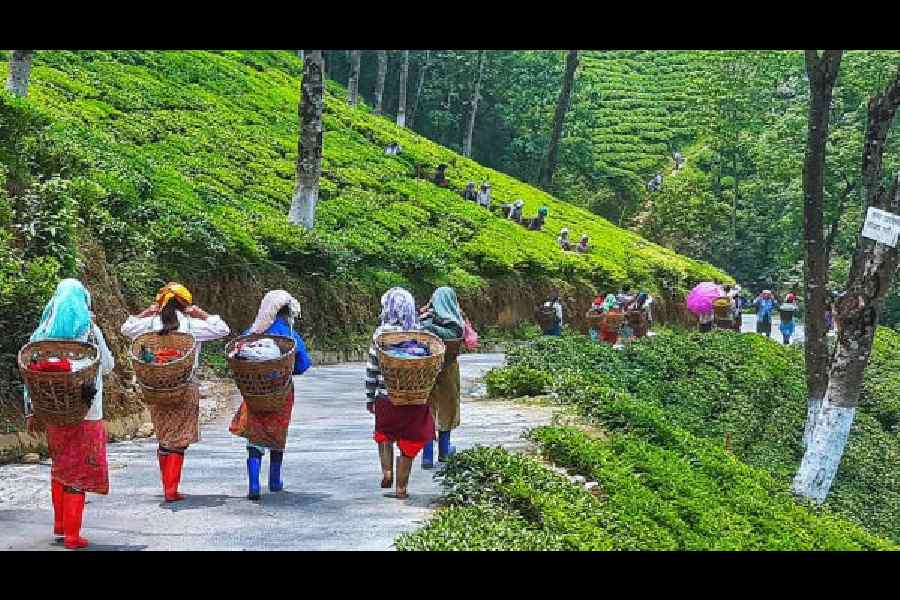Tea gardens run by organised players and small growers appear to have taken a divergent stand on the mandatory closure of tea production during the winter months as the industry grapples with lower auction prices, higher production and a rise in imports.
The Tea Board, which regulates the industry that employs over a million people directly, has been announcing a date for early closure for North India (Bengal and Assam) from 2018 onwards to balance supply with demand, to support prices. In 2024, tea production in Bengal was mandated to stop on November 30.
The Board, which reports to the Union ministry of commerce, is yet to announce a date of early closure for 2025. In 2024, the same was conveyed through a circular in July. In the last meeting of the Board, which took place in September, a decision was taken not to go for an early closure, which effectively would let growers, big and small, make commercial decisions on the closure based on market forces.
While associations of organised players, such as the Indian Tea Association and the Tea Association of India have argued against an early closure, the umbrella body of small tea growers, the Confederation of Small Tea Growers Associations (CISTA), has now urged the Tea Board to issue an order notifying the last plucking date as December 25 for Bengal and December 20 for Assam.
“A decision for early closure during winter months was taken based on the representation from stakeholders. Now the decision to keep it open has also been taken by the Board based on the feedback from stakeholders,” a source aware of the deliberations said. However, a final decision is expected later this month, given that divergent views have emerged, the source added.
Demand-supply
Oversupply, especially led by small tea growers, has been the bane of the tea industry for more than a decade as it has depressed prices. A decision for early closure during winter, when leaf growth is barely visible due to cold weather, was taken on two accounts: to cut volumes and maintain quality.
The expectation was that lower production would support prices. However, it did not happen this year. While production was lower by 99 million kilograms in North India in 2024 compared with 2023, prices were down too.
Between April and October, the auction prices of CTC leaf and the dust prices of Assam were down 15.13 per cent or ₹41.13 per kg. Prices dropped by ₹36.51 or 17.56 per cent for Dooars-Terai (Bengal) in the same period, data accessed from ITA showed.
“Early closure last year did not translate into buoyant prices in the first part of 2025. One could attribute this to the surge in imports towards the end of 2024, apart from higher production in the current year.
“Though imports are likely for re-exports, apparent surplus globally as well as in the domestic pipeline may have impacted the market,” Arijit Raha, secretary-general of ITA, said, adding that the Association has not proposed an early closure this year.
His view was echoed by Prabir Bhattacharjee, secretary-general of TAI. “We saw that there has been a surge of cheap tea from Kenya, below our average cost of production. The crop we sacrificed was met by imports, and producers did not gain. Hence, our members have decided not to press for an early closure, and the same has been conveyed to the Tea Board,” he said.
Production volume in North India during December is pegged at around 50-55 million kg. Imports to India were pegged at 25.71 million kg between April-August 2025 compared with 22.67 million kg in the same period of 2024.
Small growers’ views
Bijoy Gopal Chakraborty, president of CISTA, however, said that the absence of a formal notification would be detrimental to the tea industry.
Most of the bought leaf factories (standalone tea factories which process green leaf produced by small growers) will start production during the dormancy period with poor quality of tea waste purchased from Assam, damaging the market, he argued.
“The Board should also announce a date to start plucking at the time of closure notification so that producers can plan pruning tea bushes, which is important for quality,” Chakraborty said.
Small growers account for 54 per cent of tea production. Crops in North India are higher by 42 million kg to 796 million kg from January to September, according to the Tea Board. The higher production has almost entirely come from small growers, leaving estates with stagnant volumes and lower prices, further exacerbating their stretched finances.
Prabhat Bezbaruah, former chairman of the Tea Board, supported CISTA’s views. “As days get shorter during winter, production drops and quality suffers. It, therefore, makes no sense to keep the gardens open,” he said.










